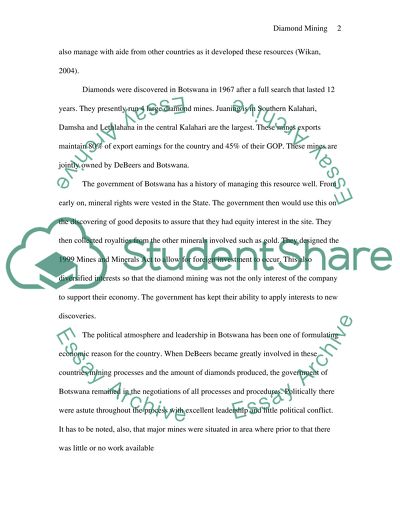Cite this document
(“Diamond Mining Essay Example | Topics and Well Written Essays - 2000 words”, n.d.)
Retrieved from https://studentshare.org/miscellaneous/1521878-diamond-mining
Retrieved from https://studentshare.org/miscellaneous/1521878-diamond-mining
(Diamond Mining Essay Example | Topics and Well Written Essays - 2000 Words)
https://studentshare.org/miscellaneous/1521878-diamond-mining.
https://studentshare.org/miscellaneous/1521878-diamond-mining.
“Diamond Mining Essay Example | Topics and Well Written Essays - 2000 Words”, n.d. https://studentshare.org/miscellaneous/1521878-diamond-mining.


